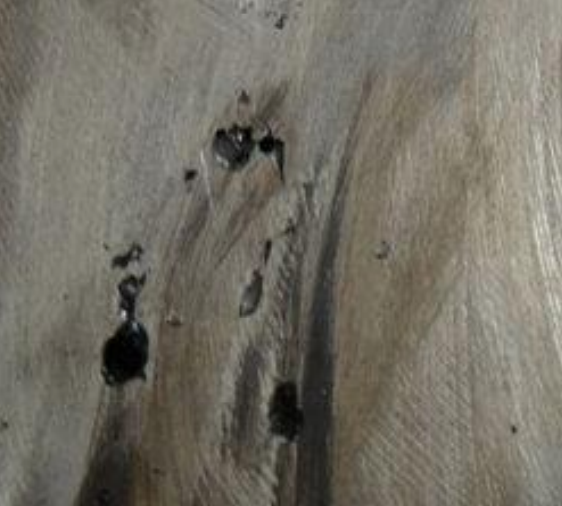Die Casting Porosity Causes and Solutions - Part 3
- Hill and Griffith

- Apr 25, 2018
- 4 min read
By Tim Cowell, Hill and Griffith Company, Technical Director
Gas Porosity (Lubricant)
The lubricant used on the dies or on the plunger can generate gas when heated by the incoming metal. This gas (like the steam) is only formed when the metal arrives, and so it is not possible to force most of the gas out the vents ahead of the metal flow - it will mostly be captured in the part as porosity. All lubricants give off some gas when heated to the temperature of the molten metal - the amount and type of gas will vary from lubricant to lubricant.


The biggest single lubricant source of gas porosity is the plunger lubricant. The usual problem is that the lubricant is applied ahead of the plunger much heavier than is needed. This is especially true when a dragging or worn tip is nursed along with extra lubricant - this is bad practice and causes the porosity to come and go as the lubricant is increased or decreased. The best option is to use a tip design that provides good life – Poor tip life equals excessive plunger lubricant.


Gas Porosity (Lubricant) – Key Check Points
Check list of actions for gas porosity from lubricants:
Check the amount of plunger lubricant
Reduce the die spray lubricant
Look for pockets where the lubricant can accumulate on a cold die
Check for leaking water lines
Check for dripping sprayers
Check for leaking hydraulic cylinders
Gas Porosity - Blisters

Blisters are another version of gas porosity, the gas just happens to be just under the surface. The trapped gas is under high pressure at the end of fill and the metal may shrink and squeeze it more. When the casting is taken out of the die, and the die surface is no longer there to hold the casting shape the skin is soft at the temperature of the casting at ejection, and the trapped gas is able to push up a blister.

Blisters – Key Check Points
The same corrections used for gas porosity apply for blisters:
Reduce trapped air (see gas porosity corrections)
Reduce spray and plunger lubricant
Eliminate water on the die
Correct venting and vacuum problems
Blisters should be eliminated by correcting the gas porosity problem. Cool the die in the immediate area where the blisters occur by:
Cooling the blister area with die spray
Cooling the blister area by adjusting water lines
Cooling the whole die by slowing the cycle time
Alternative solution is by immediately quenching the casting, which strengthens the skin of the casting.
Shrink Porosity

Develops because the metal occupies less space when solid than it did when it was liquid. Happens to all metals (except a few special alloys). For die casting alloys, the difference in volume will be about 4% to 6%. This extra space will be concentrated at the last point to solidify, which is the hottest spot in that section of the casting. Shrink porosity is rough and irregular in shape and this shape characteristic is the quickest and easiest way to identify shrink porosity. The shape and appearance of the porosity comes from the way the casting solidifies. This solidification process is important to understand if you are going to diagnose shrink defect problems, so we will spend a few minutes reviewing it.

When the casting is filled, it is filled with high velocity metal that is very turbulent, and is likely to be a spray. As the casting solidifies towards the center (or other hot area), the solidification rate slows down, and a dendritic structure starts to appear. Dendrites are crystal structures from the pure base metal (aluminum, magnesium or zinc) - they are tree like structures that form in the solidifying liquid.

The dendrites grow slowly, and by the time the last metal solidifies, there will be a lot of dendrites in this area. This structure will predominate at the last point to solidify, and the rough dendritic structure causes shrink porosity holes to have a rough surface. This roughness is a guide to the cause of the porosity. The shrink porosity is usually crack like in appearance, and is jagged, rough and irregular in general.

When the casting is filled, it is filled with high velocity metal that is very turbulent, and is likely to be a spray. This turbulence will cause the surface (where the die is very cold compared to the hot metal) to freeze first. The skin freezes very quickly, which forms a very strong, dense, and fine grained surface with very low porosity, this is due to the rapid freeze rate. Once the skin has formed, the freeze rate slows down and the composition gradually changes.
We'll continue next week with more about porosity caused by shrinkage and the conclusion of the presentation.
What is die casting porosity? Gas porosity is the biggest single problem in die casting. The high gas content prevents heat treating or welding because it makes the strength unpredictable. Gas porosity is round and generally smooth, although it can be flattened to some extent by pressure. The actions taken to reduce gas porosity in general are not the same as the actions for reducing shrink porosity.
Die Casting Process in Google and NADCA News:









Comments